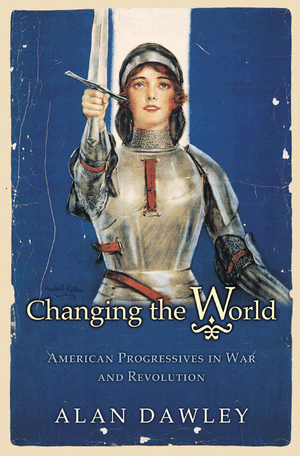The
Organization of American Historians annual meeting begins tomorrow in New York. There are many interesting panels scheduled. Here is just a sampling of interest to legal historians.
I'm speaking
Friday at 3:00 pm on this panel:
Race, Political Activism, and the Cold War
Chair: Penny Von Eschen, University of Michigan
Cold War Politics and the Making of an "American Asian" Identity
Charlotte Brooks, Baruch College, City University of New York
Race, Hawaiian Statehood, and the Construction of the Model Minority
Ellen Wu, Indiana University
Rethinking the History of U.S. Civil Rights Struggles during the Cold War through a Multiracial, Los Angeles Lens
Shana Bernstein, Southwestern University
Comment: Mary Dudziak, University of Southern California
Other panels of interest:
Friday 10:00 am
The CORE of the Solution: Achieving Justice in the Mississippi Burning Murder Case
Allison Marie Nichols, Georgetown University
Brittany Saltiel, University of Wisconsin
Barry Bradford, Adlai E. Stevenson High School
Sarah Siegel, Yale University
Friday 5:00 pm
Storm Warnings: Rethinking 1968, "The Year that Shook the World"
Cosponsored by the Center for Contemporary Black History at Columbia University
Moderator: Peniel Joseph, Brandeis University
Jeremi Suri, University of Wisconsin
Michael Kazin, Georgetown University
Matthew Lassiter, University of Michigan
Thomas Sugrue, University of Pennsylvania
Heather Thompson, University of North Carolina, Charlotte
Manning Marable, Columbia University
Saturday, 1:00 pm
What Every Historian Should Know (and Doesn’t): How Federalism Has Shaped American HistoryChair: Hendrik Hartog, Princeton University
Structuring the Balance of Power: How American Federalism Has Shaped the History of Railroads, Chain Stores, and Other Corporations
Colleen A. Dunlavy, University of Wisconsin-Madison
Pragmatic Federalism in Modern U.S. History
William R. Childs, The Ohio State University
The Constitution, Federalism, and America’s Destiny
David Brian Robertson, University of Missouri, St. Louis
Making the New American Family: The Cold War Origins of International AdoptionChair: Ellen Herman, University of Oregon
From Billy Graham to Pedro Pan: Evangelicals, Anticommunism, and Immigration Law in Transnational Adoption to the U.S.
Laura Briggs, University of Arizona
A Measure of Fitness: The African American Family and Early U.S.-Korean Adoptions
Kori Graves, University of Wisconsin, Madison
Harry Holt versus The Welfare: The Fight Over Proxy Adoption
Arissa Oh, University of Chicago
Comment: Ellen Herman
Lived Histories of the U.S.-Mexico Borderlands since World War II
Chair: Rachel St. John, Harvard University
Ser Mujer, Ser "Mojada" (Being a Woman, Being "Wetback"): Gender, Sexuality, and Immigration Reform, 1947-1956
Ana Elizabeth Rosas, University of California, Irvine
Alex G. Jácome, and Political Culture in the Arizona-Sonora Borderlands, 1950-1970
Geraldo Cadava, Yale University
Immigration, Conservative Backlash, and Chicano Student Response: Movimiento Estudiantil Chicana/o de Aztlán, 1970-2000
Gustavo Licon, University of Southern California
Comment: Kelly Lytle Hernandez, University of California, Los Angeles
Saturday, 3:00 p.m.Representing the Race: African American Mediators, Negotiators, and Cultural Brokers at the Turn of the CenturyChair: Richard Pierce, University of Notre Dame
"Her Claim for Pension Is Lawful and Just": African American Claims Agents, Civil War Widows, and the Military Pension Bureau
Brandi Brimmer, Vanderbilt University
Holding the Ear of the President: Black Barbers and Black Politics in the late Nineteenth Century
Quincy Mills, Vassar College
Foster Mothers of Humanity: Black Nurses as Civil Rights Fighters in the early Twentieth Century
Andrea Patterson, California State University, Fullerton
Comment: Stephanie Shaw, The Ohio State University
Forty Years Since King, A Roundtable Discussion: Struggling to End Racism, Sexism, Poverty, and WarSponsored by the Labor and Working-Class History Association
Chair: Clayborne Carson, Stanford University
The Social Gospel Radicalism of Martin Luther King, Jr.
Clayborne Carson
King, Black Workers, and the Spirit of Memphis
Michael Honey, University of Washington
Women, The Black Poor and the Diverse Politics of Freedom
Barbara Ransby, University of Illinois, Chicago Circle
The King Legacy and Today’s Freedom Struggles
Manning Marable, Columbia University
A reception will follow this session.
Sunday, 8:00 a.m.
Citizenship: Law, Status, and Rights in the American Nation-State
Chair: Mae M. Ngai, Columbia University
Wanted, But Not Welcome: Designs for Labor Immigration Without Citizenship
Ari Zolberg, Th e New School
From "Separate but Equal" to "Equal but Different": Changing Conceptions of Civic Equality in Twentieth-Century America
Rogers Smith, University of Pennsylvania
The Making of Modern American Citizenship Law
William Novak, University of Chicago
Comment: Willy Forbath, University of Texas, and Mae M. Ngai
Reviving the Federalists
Chair: Doron Ben-Atar, Fordham University
The "Yankee Dialect": Ames, Quincy, Pickering, and the Emergence of Radical Federalists, 1805-1812
Dinah Mayo-Bobee, University of Massachusetts
Federal Boston and the Taming of the American Revolution, 1795-1805
Thomas Conroy, Stonehill College
Nullification, Secession, or "a Great Pamphlet?": Reexamining the Hartford Convention Movement
Kevin Gannon, Grand View College
Sunday 10:00 a.m.
Off site at Schomburg Center for Research in Black Culture
White Violence and the Great Migration: Two Approaches, Sundown Towns and A Little More Freedom
Sponsored by the Society for Historians of the Gilded Age and Progressive Era
Chair: Darrel Bigham, University of Southern Indiana
Shirley Portwood, Southern Illinois University, Edwardsville
Sundiata Cha-Jua, University of Illinois, Urbana-Champaign
Comment: James Loewen, Catholic University of America, and Jack Blocker, Huron University College
Teaching Judicial History: Federal Trials and Great Debates in United States HistoryChair: Lucy Salyer, University of New Hampshire
Designing Curriculum for Historic Federal Trials
James Landman, American Bar Association
Historic Trials in the Classroom
Jeanne Barr, Francis W. Parker School
Court History Narratives for Teachers and Students
Bruce Ragsdale, Federal Judicial Center
Bush v. Orleans Parish School Board: An Examination of the Documents
Bob Pannozzo, Stone Bridge High School
Sunday 1:00 pm
Roundtable: Civil Rights Lawyering: Then and NowModerator: Patricia Sullivan, University of South Carolina
Kenneth Mack, Harvard Law School
Lani Guinier, Harvard University
Lewis M. Steel, Outten and Golden, LLP
You can find the full program on-line
here.
 Century (1789–1920)."
Century (1789–1920)."









